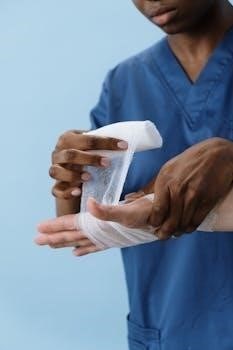The Junior First Aid badge‚ part of the Legacy set since 2011‚ empowers young individuals to assist those who are ill or injured. This badge replaces the retired First Aid badge and focuses on practical skills.
Badge Overview and Purpose
The Junior First Aid badge aims to equip young people with essential skills to handle emergencies. It’s designed to help them understand how to provide basic care to those who are sick or hurt. This badge‚ developed in partnership with the American Red Cross‚ focuses on practical knowledge and real-life application. The primary purpose is to ensure that Juniors can confidently and effectively respond to situations requiring first aid. It is a part of the Legacy set‚ introduced in 2011‚ replacing the previously existing First Aid badge‚ ensuring an updated and relevant curriculum. The badge emphasizes learning the appropriate steps to take in various scenarios to provide help and support.
Understanding Emergency Preparedness
Being prepared for emergencies involves learning crucial steps. This includes knowing how to react‚ communicate‚ and provide initial care. It’s about being ready for unexpected situations.
Steps to Be Prepared in an Emergency
Preparing for an emergency involves several key actions. Firstly‚ it’s vital to understand the potential risks in your area. Creating a family emergency plan is crucial‚ ensuring everyone knows what to do and where to go. This includes designating a meeting place and having contact information readily available. Gathering essential supplies‚ such as water‚ non-perishable food‚ and a first-aid kit‚ is also important. Practicing emergency drills can help everyone stay calm and act quickly. Lastly‚ it is important to know how to contact emergency services and learn basic first aid skills. This thorough preparation can significantly reduce the impact of any emergency.
The Check‚ Call‚ Care Method
The Check‚ Call‚ Care method is a simple yet effective approach to handling emergencies. First‚ ‘Check’ the scene to ensure it’s safe for you and the injured person. Look for hazards before approaching. Next‚ ‘Call’ for help by contacting emergency services or asking someone else to do so. Provide clear information about the location and nature of the emergency. Finally‚ ‘Care’ for the injured person by providing basic first aid‚ staying with them until professional help arrives. Understanding and practicing these three steps can make a crucial difference in an emergency situation. This method is a core part of basic first aid training.
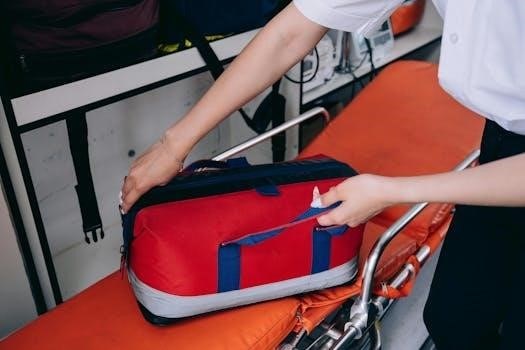
Interacting with First Responders
To earn the badge‚ girls must engage with first responders‚ such as EMTs‚ firefighters‚ or police officers‚ to learn from their experiences. This interaction helps prepare them for real-life situations.
Talking to EMTs‚ Firefighters or Police Officers
As part of earning the Junior First Aid badge‚ it’s essential to talk with professionals who respond to emergencies. This might involve scheduling a visit with local EMTs‚ firefighters‚ or police officers. During these conversations‚ the girls can learn about their roles in emergency situations‚ the kinds of calls they receive‚ and what steps they take when arriving at a scene. They can ask questions about the equipment they use‚ how they assess situations‚ and how to best assist them. These interactions provide valuable insights and help girls understand the importance of first aid and emergency response. It’s also a great opportunity to learn about community helpers.
Learning from First Responders’ Experiences
Gaining insights from first responders’ real-life experiences is a crucial element of the Junior First Aid badge. By listening to stories from EMTs‚ firefighters‚ or police officers‚ juniors can develop a deeper understanding of the unpredictable nature of emergencies. These professionals can share examples of situations where they used their training and skills to help others. They can emphasize the importance of staying calm‚ assessing the situation effectively‚ and applying appropriate first aid. Hearing firsthand accounts reinforces the impact of first aid knowledge‚ and it encourages a sense of preparedness in the face of emergencies. These experiences provide a real-world context for the badge requirements.
Creating a First Aid Kit
As part of the Junior First Aid badge‚ creating a personal first aid kit is crucial. This hands-on activity helps juniors understand essential items and their proper use in emergencies.
Making a Portable First Aid Kit
Creating a portable first aid kit is a key activity for earning the Junior First Aid badge. This involves assembling essential items into a small‚ easily carried container. This kit should be designed for personal use‚ such as for hiking or everyday adventures. Juniors should learn how to select the right supplies and ensure they are stored safely. The process includes understanding the purpose of each item and how to use it effectively. This hands-on experience provides valuable life skills and reinforces preparedness for minor injuries and emergencies. The kit should be compact‚ lightweight‚ and practical for a junior to manage independently. This ensures that the first aid supplies are accessible whenever needed.
Essential Items for a First Aid Kit
A well-stocked first aid kit for Juniors needs specific essential items. These include bandages of various sizes‚ antiseptic wipes‚ and gauze pads. Adhesive tape is also crucial for securing dressings. It is important to have a small pair of scissors and tweezers for removing splinters or debris. Pain relievers‚ such as ibuprofen or acetaminophen‚ should also be included‚ with adult supervision. A cold pack is useful for reducing swelling from bumps and bruises. Always include a first aid instruction guide‚ and be aware of expiration dates. Gloves are necessary for protection. The kit must be stored in a waterproof container to keep the items dry and clean.
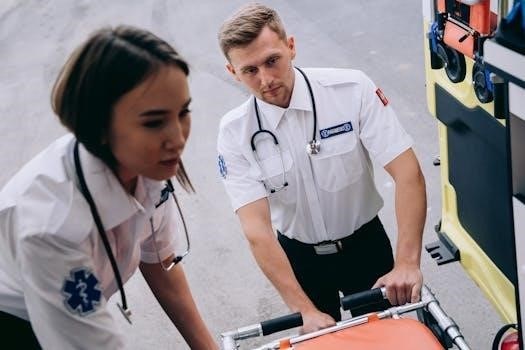
Handling Urgent First Aid Situations
Identifying situations requiring fast action is crucial. Juniors must learn to recognize when immediate first aid is needed. This involves understanding basic procedures for urgent scenarios and knowing when to call for help.
Identifying Situations Requiring Fast Action
Recognizing emergencies that demand swift intervention is a key component of the Junior First Aid badge. This includes understanding the signs of severe allergic reactions‚ such as difficulty breathing or swelling‚ which necessitate immediate care. Similarly‚ situations involving uncontrolled bleeding‚ suspected broken bones‚ or loss of consciousness require prompt response. Juniors should learn to differentiate between minor issues and life-threatening scenarios‚ enabling them to act quickly and appropriately. It’s crucial to identify these situations to ensure the safety and well-being of themselves and others. Knowing when to call for professional help is also a vital part of this recognition process.
Basic First Aid Skills for Juniors
The Junior First Aid badge emphasizes practical skills that empower young individuals to assist in emergencies. This includes learning how to control bleeding using direct pressure and bandaging wounds to prevent infection. Understanding how to respond to minor burns and sprains with cool water and support is also important. Juniors should learn to recognize the signs of shock and how to keep a person comfortable while waiting for further assistance. The badge also covers basic knowledge of the Check‚ Call‚ Care method‚ which is crucial for responding effectively to a variety of situations. Emphasis is placed on practical application and confidence-building for young first aiders.
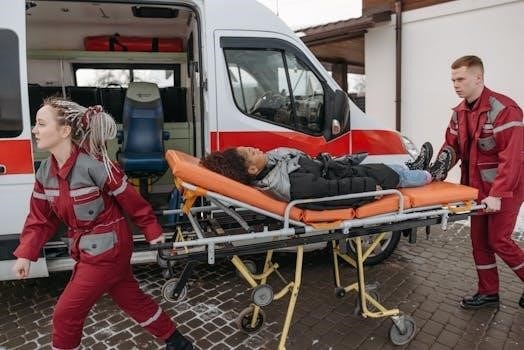
Badge Activities and Projects
To earn the badge‚ Juniors can create posters‚ skits‚ or short videos about first aid. These activities reinforce learning and promote sharing knowledge with others in engaging formats.
Creating Posters or Skits
Juniors can design informative posters that explain essential first aid steps‚ such as “Check‚ Call‚ Care‚” or demonstrate how to assemble a first aid kit. Alternatively‚ they can develop short skits portraying different emergency scenarios and the appropriate first aid responses. These visual and performance-based projects are designed to be both educational and engaging‚ allowing Juniors to creatively demonstrate their understanding of first aid principles. The activities should focus on practical application and promote the importance of acting quickly and responsibly during emergencies; These projects also encourage teamwork and communication skills among the participants.
Making a Short Video on First Aid
Juniors can create a short video demonstrating essential first aid techniques. This could include showing how to handle minor injuries like cuts and scrapes‚ or how to respond to more serious situations by following the “Check‚ Call‚ Care” method. The video project allows for creativity and can be a fun way to educate others about first aid. The video should focus on clear‚ easy-to-understand instructions‚ ensuring that viewers can learn practical skills. Juniors can collaborate on scripting‚ filming‚ and editing‚ enhancing their team work and communication. This activity is a great way to share their knowledge with a broader audience.
Badge Requirements and Fulfillment
Earning the Junior First Aid badge involves completing various activities‚ like creating first aid kits‚ learning basic skills‚ and interacting with first responders. Fulfillment ensures a legacy of preparedness.
Completing Activities for the Badge
To successfully earn the Junior First Aid badge‚ participants must engage in a series of carefully designed activities. These activities are structured to provide practical‚ hands-on experience and deepen understanding of first aid principles; A key component includes learning how to respond effectively in emergency situations‚ applying the ‘Check‚ Call‚ Care’ method. Furthermore‚ creating a personal first aid kit is essential‚ along with demonstrating its proper use. Badge earners will also learn to identify situations requiring fast action and practice basic first aid skills. Finally‚ engaging in creative projects like making posters or short videos will reinforce their learning.
The Junior First Aid Badge Legacy
The Junior First Aid badge‚ introduced as part of the Legacy badge set in 2011‚ holds a significant place in the development of young individuals. Replacing the previous First Aid badge‚ it signifies a commitment to providing updated and relevant first aid knowledge. Earning this badge equips girls with life-saving skills‚ promoting their ability to help others in times of need. This badge fosters a sense of responsibility and confidence‚ empowering them to become active and prepared members of their communities. The badge’s legacy lies in its contribution to creating a generation of first-aid aware individuals.
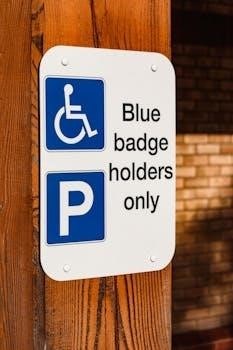
Additional Resources
Activity booklets and guides are available to support badge requirements. The badge is developed in partnership with the American Red Cross‚ providing reliable first aid information and resources.
Activity Booklets and Guides
To effectively earn the Junior First Aid badge‚ numerous activity booklets and guides are readily accessible. These resources are designed to help young individuals prepare for real-life situations and emergencies. These materials often provide step-by-step instructions‚ making it easier to fulfill badge requirements. They include engaging activities that teach valuable lifesaving techniques. These resources are not only suitable for groups but also for teachers‚ home-schooled children‚ and frontier girl leaders. The booklets and guides often outline the necessary actions to take in an emergency‚ providing a clear path to earning the badge and helping others confidently. They serve as an invaluable tool for learning practical first aid skills.
American Red Cross Partnership
The Junior First Aid badge is developed in partnership with the American Red Cross‚ a leader in first aid training and emergency preparedness. This collaboration ensures that the badge content is up-to-date and aligns with the best practices in first aid. The partnership brings credibility and a high standard of education to the badge program. This collaboration gives girls access to resources and expertise from a trusted organization. The Red Cross’s involvement underscores the importance of learning first aid skills. This partnership provides a solid foundation for the badge‚ emphasizing real-world application and effective emergency response techniques‚ promoting safety and preparedness.
